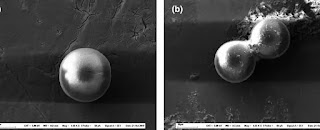Our environment is under siege by plastic microfibers, but a revolutionary method, employing diamonds and titanium, may offer a solution. This technique aims to eradicate these microfibers before they infiltrate our ecosystem, transforming them into natural molecules.
The fashion sector, a significant contributor to this growing problem, is largely silent about it. A substantial portion of our synthetic clothing, made from plastic, is releasing harmful microplastic fibers into our water systems.
Researchers from the Institut National de la Recherche Scientifique (INRS) in Canada have pointed out the alarming impact of microplastic discharge on water pollution. Their studies reveal that microplastics in aquatic environments attract toxic substances and are ingested by marine life, subsequently accumulating in the food chain and posing potential risks to humans.
Plastic pollution can originate from various sources, including plastic packaging and car tires. However, microfibers from our clothes, often overlooked, are significant contributors. Synthetic fabrics like polyester, nylon, and acrylic shed tiny plastic microfibers during laundry, which can end up in our water bodies if not properly filtered out.
The pioneering solution, dubbed electrooxidation, doesn't just capture these fibers; it actively breaks them down. "Our process uses electrodes to generate hydroxyl radicals (·OH) that attack microplastics," explains electrotechnology scientist Patrick Drogui from the INRS team. This eco-friendly method decomposes the microplastics into harmless CO2 and water molecules.
The team's experiments, involving boron-doped diamond and titanium electrodes on artificially contaminated water, revealed that up to 89% of the plastic could be degraded in six hours. The primary challenge to scaling this method is the high cost of diamonds, though these can be reused for several years.
The researchers' ultimate vision is to integrate this technology into commercial laundries or household washing machines. This goal, however, is still a long way off. It's also essential to note that while electrooxidation provides an innovative solution, other methods exist, such as processes that capture 99% of particles larger than 20 micrometres. But the electrooxidation process provides a unique solution to the challenge of how to deal with the collected plastic.
Moreover, considering that textile fabrics are the primary source of microplastics in the ocean, our current efforts to eliminate them are significantly insufficient.
An obvious solution to prevent clothes from shedding plastic is to cease using plastic in clothing production. This would necessitate substantial changes in how we produce, consume, and regulate the clothing industry.
However, for the plastic already in our consumer system, it's reassuring to know that we may soon have more ways to remove microfibres before they can inflict potential harm.
The research findings have been published in Environmental Pollution.


Post a Comment